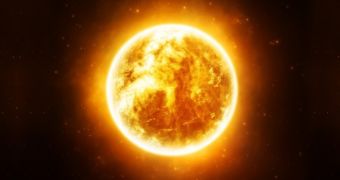Physicists speaking at the National Astronomy Meeting in Portsmouth, UK, this past June 24 announced that, according to recent investigations, the Sun was no stranger to extreme weather manifestations.
Thus, it appears that this star often experiences high winds and even rains, and that these phenomena are not all that different to the ones on Earth. At least as far as their working principles are concerned, that is.
According to Dr. Eamon Scullion with Trinity College Dublin, the rains that occur on the Sun are made up of hot plasma, i.e. electrically charged gas, droplets that sometimes grow to be the size of Ireland.
Besides, evidence indicates that, after forming in the outer solar atmosphere, dubbed the corona, these droplets journey towards the Sun's surface at a speed of about 200,000 kilometers per hour (124,274 miles per hour).
Simply put, such weather events on the Sun make the entire idea of dancing and singing in the rain a tad less appealing than Hollywood would have us believe it is. Unless one considers being turned to ash in the blink of an eye oddly romantic.
Dr. Eamon Scullion goes on to explain that, as surprising as this may sound, rains that occur on the Sun on a regular basis are the result of processes very much similar to those that foster rains on Earth.
Specifically, he says that the hot plasma droplets that make up solar rains are birthed by material that reaches the star's corona in the aftermath of rapid evaporation events, which themselves are the result of powerful explosions known as flares.
What's more, the researcher and his colleagues say that these droplets form due to the natural cooling and condensation of massive clouds that comprise hot, dense plasma. According to them, this is precisely how rain droplets form on our planet.
As detailed on the official website for the Royal Astronomical Society in the UK, it sometimes happens that rain events on the Sun are so complex and powerful that the droplets falling on the surface of this star look less like rain and more like waterfalls.
Commenting on these findings, Dr. Eamon Scullion said, “Showers of 'rain' and waterfalls on the Sun are quite something, though I wouldn't recommend taking a stroll there anytime soon. But the parallels with weather on Earth are both striking and surprising.”
In order to study rain events on the Sun, the Trinity College Dublin researcher and his colleagues relied on information and images provided by satellites like the NASA Solar Dynamic Observatory and observatories like the Swedish 1-m Solar Telescope.

 14 DAY TRIAL //
14 DAY TRIAL //